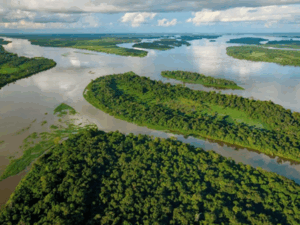Southern Ocean warming – a consequence of climate change – threatens the viability of 60% of Antarctic ice shelves
An international team led by scientists from Université Grenoble Alpes and CNRS, within the Grenoble Institute of Environmental Geosciences (IGE – CNRS/INRAE/IRD/UGA – Grenoble INP-UGA), has demonstrated in a study published on 29 October 2025 in Nature that 60% of the floating ice shelves surrounding the Antarctic ice sheet could be destined to disappear in the long term.
These ice shelves currently act as a brake on the contribution of the Antarctic ice sheet to global sealevel rise. Under high anthropogenic greenhouse gas emissions leading to a global warming of around 12°C by 2300, the ocean would warm significantly, causing intense melting at the base of the ice shelves. This would ultimately result in their collapse, drastically reducing their effect as a brake and accelerating the pace of sealevel rise. In a scenario of substantial emission reductions limiting global warming to 2°C, 63 out of 64 shelves could still be viable until 2300 or beyond.
Ice shelves – the floating extensions of the Antarctic ice sheet – are its Achilles’ heel: they currently restrain the flow of continental ice into the ocean, but are extremely sensitive to atmospheric and oceanic warming. Their disappearance would dramatically accelerate sea-level rise, one of the major challenges of the coming centuries.
Using a novel method that accounts for the full range of climatic and glaciological uncertainties, including poorly understood processes such as ice fracturing and iceberg calving, the scientists estimated the thresholds beyond which certain ice shelves are unlikely to maintain their shape in the long term.
The unprecedented results of this study show that, of the 64 main Antarctic ice shelves, 26 would be
lost by 2150 if greenhouse gas emissions continue to rise in a scenario corresponding to a planetary
climate about 8°C warmer than the pre-industrial era. Under this same scenario, global warming would
reach around 12°C by 2300, and thirty-eight ice shelves would then be destined to disappear. The main cause: ocean warming that would melt the shelves from below, pushing them beyond their viability threshold. The loss of these ice shelves would remove the natural brake that currently holds back vast portions of the Antarctic ice sheet, paving the way for sea-level rise of potentially up to 10 metres over the coming centuries.
Conversely, under a scenario of drastic emission reductions keeping global warming below 2°C above pre-industrial levels, 63 out of 64 shelves could still survive until 2300 or even beyond. This study therefore confirms that today’s decisions on greenhouse gas reductions will directly determine the future of Antarctica – and of global sea level.
Pour en savoir plus
Reference
Burgard, C., Jourdain, N., Mosbeux, C., Caillet, J., Mathiot, P. and Kittel, C. Ocean warming threatens the viability of 60% of Antarctic ice shelves. Nature.
Contact scientifique
Clara Burgard
First author and postdoctoral researcher at Université Grenoble Alpes within the Institute of
Environmental Geosciences (CNRS/INRAE/IRD/UGA) during the study, now a CNRS researcher at the
Institut Pierre-Simon Laplace and the Laboratory for Oceanography and Climate: Experiments and
Numerical Approaches (CNRS/IRD/MNHN/Sorbonne Université).






